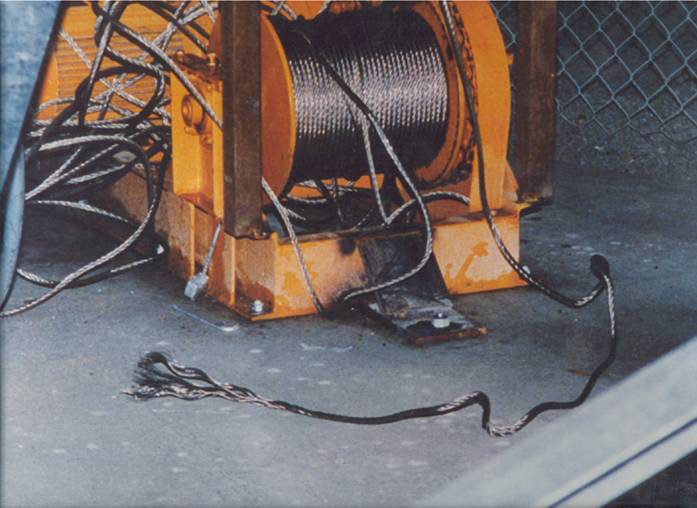

South Carolina Product Liability Attorneys
 At the home, in the workplace, at school or virtually anywhere we go, we are surrounded by various manufactured products that hopefully make our lives easier and more enjoyable. It is not unusual to find a food processor in someone’s kitchen or an electric door closer in the garage. The playroom may have all kinds of toys in various sizes, shapes and designs.
At the home, in the workplace, at school or virtually anywhere we go, we are surrounded by various manufactured products that hopefully make our lives easier and more enjoyable. It is not unusual to find a food processor in someone’s kitchen or an electric door closer in the garage. The playroom may have all kinds of toys in various sizes, shapes and designs.
On the way to work we travel in vehicles with sophisticated engines, transmissions, steering and braking systems. And at work, we may use a variety of presses, saws, rotating and reciprocating machines. Our leisure time is filled with products from boats to grills to new digital entertainment centers.
Sometimes these products fail in their essential purpose and simply no longer work. Typically, the owner can make the numerous phone calls or send letters necessary to get relief under a warranty program. Hopefully the product will be repaired or replaced by the manufacturer. But sometimes these products can cause serious personal injury or death because of their design or manufacture. These cases are known as that area of the law called Products Liability. And it is in these cases,that an experienced lawyer may help in bringing justice to a family where a product has injured, maimed or killed someone.
The law in South Carolina recognizes that a product designer, manufacturer or seller may be liable for injuries or death caused by a product if the product is found to be defective and unreasonably dangerous. Defective and unreasonably dangerous are terms of art and are determinations that ultimately must be made by a fact finder like a judge or jury. A product may be found defective and unreasonably dangerous if the product poses a foreseeable risk of serious injury or death that could have been eliminated or minimized by use of a reasonable engineering design alternative. A reasonable design alternative is a design that is technologically and economically feasible. It will not interfere with the functionality of the product. It will not cause new unintended harms. Under South Carolina law, it is the burden of the person bringing the claim (the plaintiff) to identify a reasonable engineering alternative. Thus, a product may be deemed defective and unreasonably dangerous if it fails to incorporate an effective safety device that could have been added at the time of manufacture at a reasonable cost.
A kitchen food processor that is designed without an interlocked guard capable of shutting down the rotating blade when the plastic housing is removed, would likely be considered defective and unreasonably dangerous. So would a circular power saw designed without a guard covering the rotating blade. A product may be defective and unreasonably dangerous if it contains a hidden hazard, not readily apparent to the ultimate user. For example, most people do not realize that many pontoon boats with tubular railing and gate systems, contain a pinch point capable of amputating a finger if caught in the pinch point. Workers in an industrial plant likely will not recognize a machine’s ability to inadvertently start up during a maintenance procedure, causing parts to move or rotate with deadly results.
By contrast, there are some products that are reasonably dangerous. For example, a kitchen knife maybe sharp enough to kill. There is no way to reasonably guard a kitchen knife and still have it retain its essential function. Thus, it is reasonably dangerous and the manufacturer is not liable for injuries resulting from its use.
The law in South Carolina provides several theories of recovery in a products liability action. Lawyers can bring claims over defective and unreasonably dangerous products, which include negligence, strict liability in tort, and warranty actions. Under a negligence theory, a product designer, manufacturer or seller will be judged under a reasonableness standard, i.e., what a reasonable designer, manufacturer or seller would have done under similar circumstances. Proof of a negligence claim involves showing that the designer/manufacturer knew or should have known that his product was defective and unreasonably dangerous, yet distributed it without taking any corrective action. A negligence action typically involves a knowledge element. For example, a machine designer knew his machine was capable of causing injury for lack of a safety device or should have realized the danger if he had done adequate testing of the product. Moreover, a designer/manufacturer should have realized the inadequacies of his design by review the designs with safety devices offered by his competitors.
Strict liability and warranty actions, by contrast, do not require knowledge of a defect. If a defendant seller places a product in need of a safety device or warning into the stream of commerce, the product is not later modified, and someone is injured or killed by the product, then liability attaches. Strict liability in tort is a powerful concept that places responsibility for defective products upon those who benefit from their sale to users. As between innocent victims of dangerous products and the product designer/manufacturer and sellers, the law places liability on the latter. For it is the design/manufacturer and sellers who can insure against the foreseeable loss. Further, putting liability on the designer/manufacturers and sellers creates a deterrent effect to encourage safer products.
Regardless of theory utilized, anyone bringing a products liability claim must prove that the product was defective and unreasonably dangerous, that the defect existed when the product was in the control of the defendant, that the product was not modified after leaving the control of the defendant, and the defect proximately caused the injuries and damages suffered. Certainly a car manufacturer would not be responsible for a vehicle that crashes because its brakes were removed after sale and delivery of the car. Moreover, a designer or manufacturer would not be responsible for a product that becomes unreasonably dangerous because a safety guard was unforeseeably removed and not re-installed, or for a product that was never maintained. A designer or manufacturer would not be legally responsible for injuries arising out of unforeseeable uses of the product.
If you think you or a family member or friend has been injured by a defective product, speak with an attorney experienced in products liability law. Retain the product if possible. Collect video or photographs. Retain all product literature including operating manuals, promotional literature, sales documents and instructions and warnings. In South Carolina there is a three year statute of limitations in bringing products liability claims. Typically what that means in a products liability case is that a claim must be filed at the courthouse within three years of injury or death to avoid the defense of the statute of limitations.
Kassel and McVey can assist you. Call us today at (803) 256-4242 for more information.
Personal Injury Lawyers 1330 Laurel Street Columbia, SC 29201 Phone: 803-256-4242
Mailing Address
Post Office Box 1476
Columbia, South Carolina 29202
Fax: (803) 256-1952
Copyright © 2023 John D. Kassel, Attorney at Law, LLC. All rights reserved. Privacy Policy I Terms of Service | Disclaimer
This website is designed for general information only. The information should not be construed to constitute formal legal advice or the formation of a lawyer/client relationship. The results and testimonials listed on this website are specific to the facts and legal circumstances of specific cases and should not be used to form an expectation that the same results could be obtained for other clients in similar matters. This list is not a description or characterization of the quality of the firm's representation, it is not intended to compare one attorney's work to another and is in no way a guarantee of a specific result for your case.


